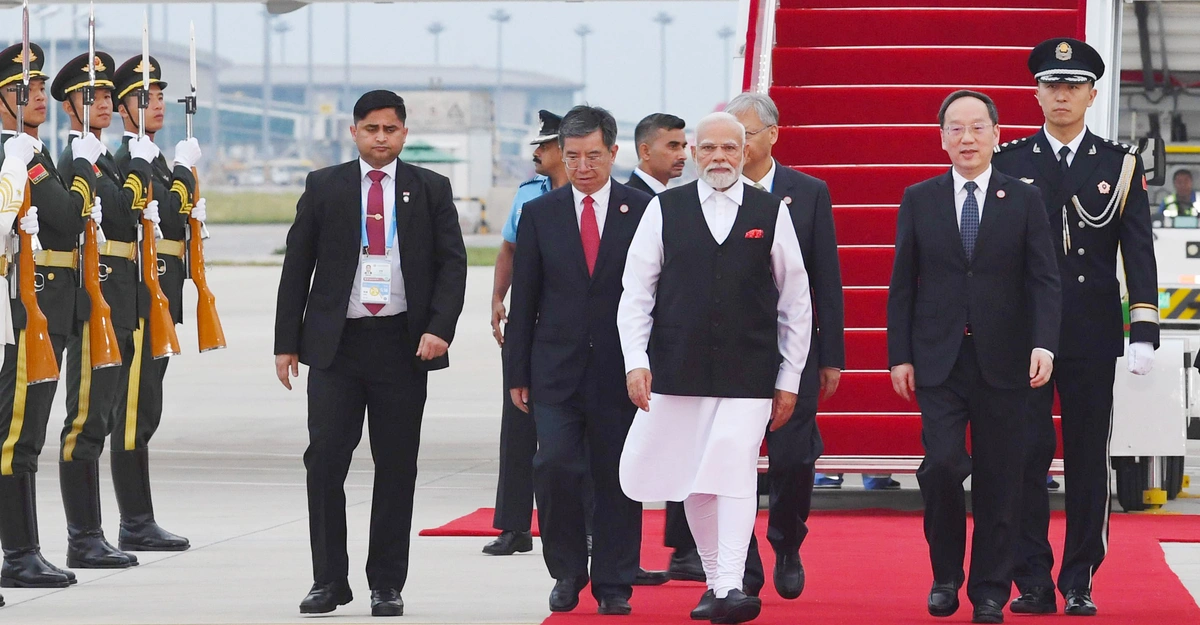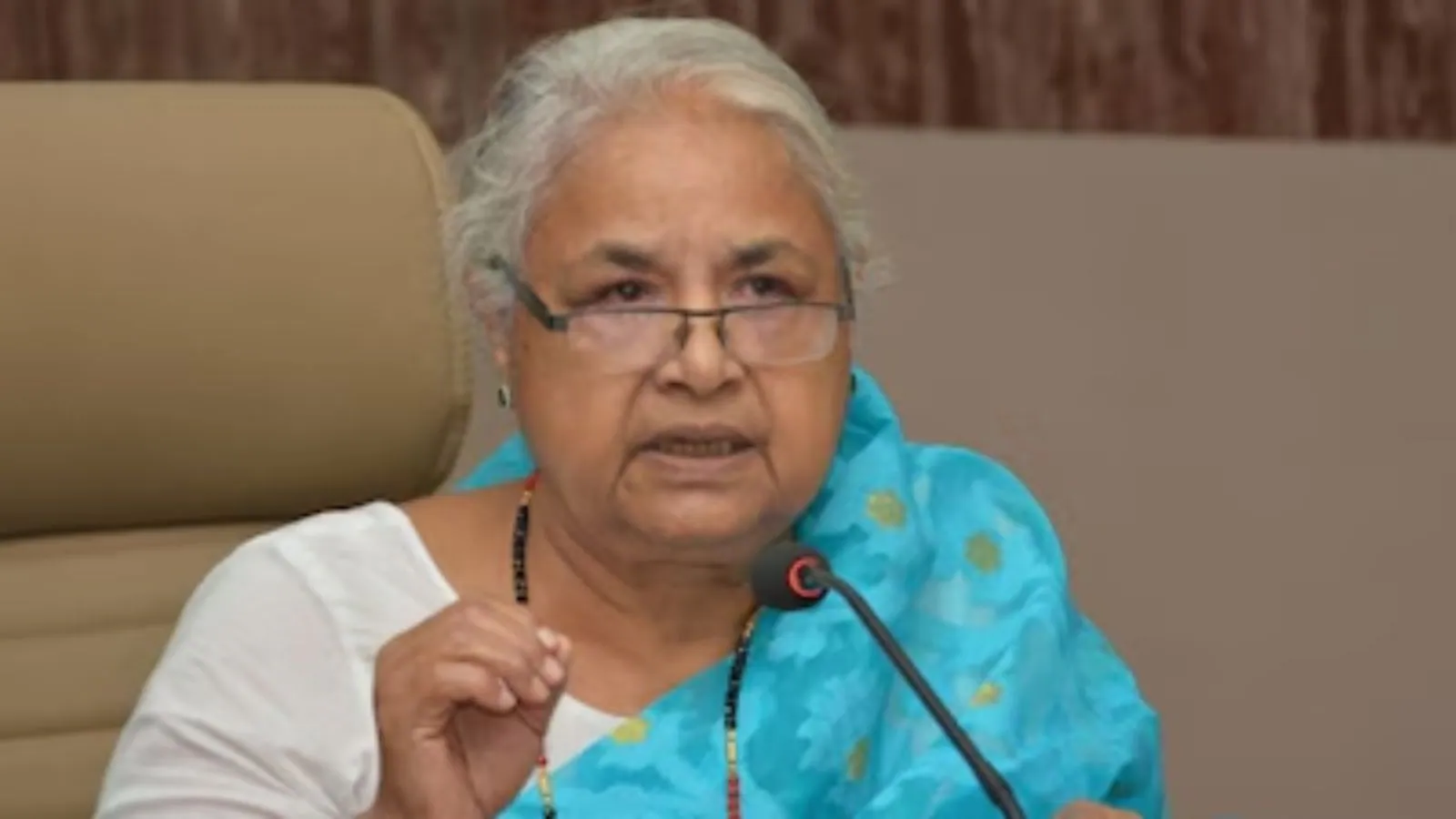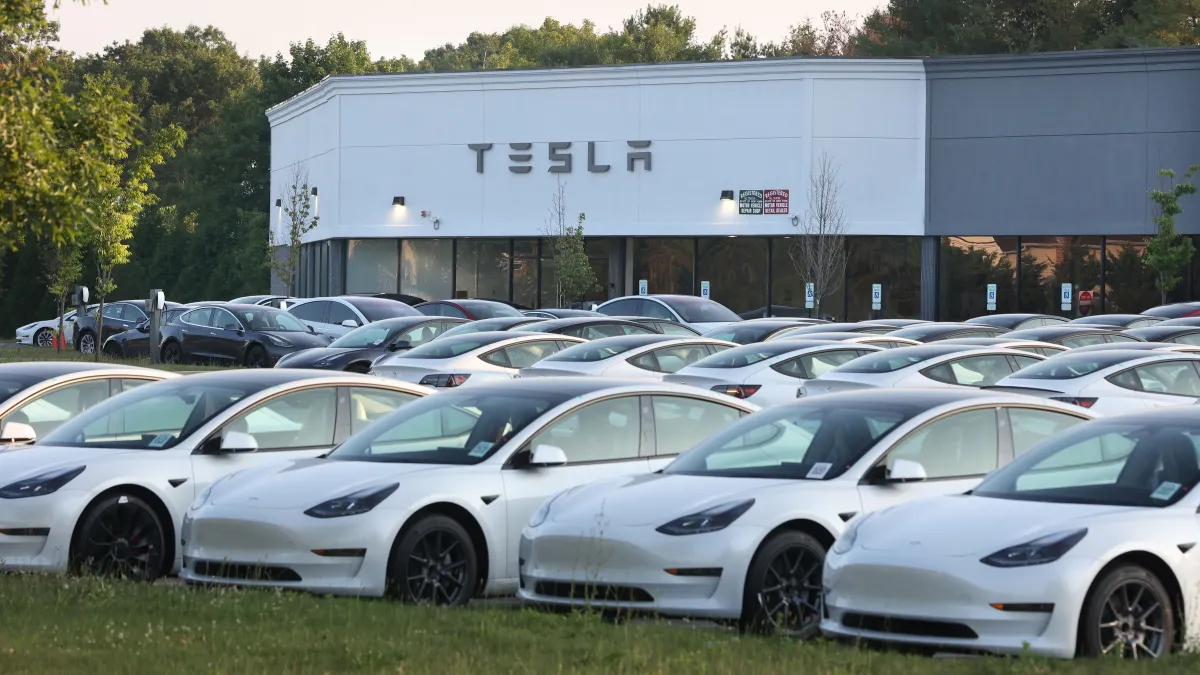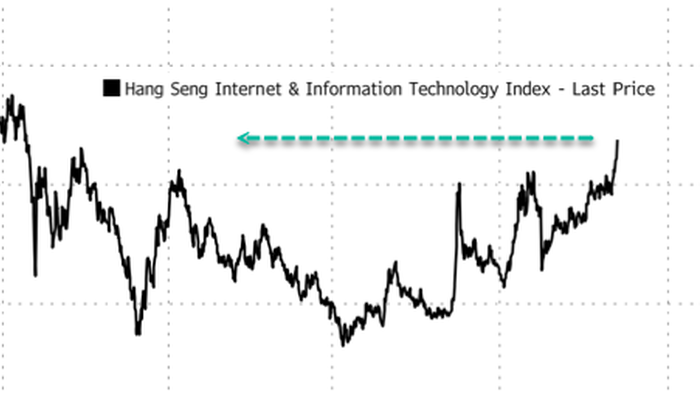
Most Republicans and many Trump-administration officials believe that the stakes of America’s competition with China are all but existential. Apparently, Donald Trump is not among them. The president talks about China as an economic rival but rarely as a strategic one—a view neatly encapsulated by his decision last month to ease export controls on advanced chips, which granted Beijing a boost in the AI race in exchange for a cut of the resulting sales.
Now Trump seems to fear doing anything that might jeopardize the prospects of a summit and trade deal with China’s leader, Xi Jinping. On Truth Social this week, the president said that he’ll be speaking with Xi on Friday and suggested that a deal on TikTok was imminent. He concluded the post by asserting that his relationship with Xi “remains a very strong one!!!”
Trump world has long disagreed on how to deal with China. In Trump’s first term, for example, then–National Security Adviser H. R. McMaster produced a strategy that centered on competition with China and Russia. Even while introducing that plan, however, Trump emphasized the need to build a “great partnership” with Beijing and Moscow. China hawks nevertheless made progress, succeeding in adding Chinese technology firms to America’s trade blacklist and banning investment in companies with links to China’s military, among other measures.
The China hawks have been sidelined in the second Trump administration, leaving the president’s money-minded view of China unchecked. Consider his approach to TikTok. Last year, Congress passed legislation to shut down the platform by this past January if its Chinese parent company, ByteDance, did not divest. Instead, Trump issued rolling extensions, effectively ignoring the law and the national-security concerns that Congress had raised. The terms of the deal Trump hinted at are unknown. But some initial reporting suggests that it could resemble previous proposals that relied on inadequate work-arounds, such as requiring ByteDance to “license” its algorithm to an American company rather than relinquish control of it. If Trump’s plan proves to be a rehash of those earlier ones, then it may be little more than a capitulation to Beijing.
The administration is also reportedly drafting a new defense strategy that prioritizes concerns in the Western Hemisphere over the dangers that Beijing poses. But the most striking example of Trump’s failure to take China seriously is his demolition of America’s relationship with India.
Washington has so far thwarted Beijing’s ambitions to dominate the Indo-Pacific by forging alliances and partnerships in the region. These relationships have become America’s key strategic advantage over China, and perhaps the most important in this regard was to be the one with India. For 25 years, Republicans and Democrats were committed to deepening ties with Delhi, which has long had suspicions about America but is even more concerned about China’s rise. Under the Biden administration, U.S. cooperation with India reached a historic high, yielding agreements on defense production, technology, and civil nuclear regulations.
Earlier this year, Trump appeared poised to continue America’s long-standing approach to India and build on his personal relationship with Prime Minister Narendra Modi. In February, Modi became one of the first foreign leaders to visit Trump in the Oval Office, and the two issued a joint statement outlining dozens of issues on which they pledged to work together. After Trump announced his “Liberation Day” tariffs in April, many observers expected India to be one of the first nations to reach a trade deal with him. Treasury Secretary Scott Bessent thought this too. Hoping to bolster the partnership, Vice President J. D. Vance visited Jaipur later that month. “If India and the United States work together successfully, we are going to see a 21st century that is prosperous and peaceful,” he said on April 22. “But I also believe that if we fail to work together successfully, the 21st century could be a very dark time for all of humanity.”
On the same day as Vance’s speech, militants killed 26 people in the Indian-administered section of Kashmir, a disputed territory claimed by both India and Pakistan. The Indian government blamed Pakistan for the attack and, two weeks later, launched strikes at its northern neighbor. Pakistan retaliated, prompting further drone and missile exchanges. Vance and Secretary of State Marco Rubio made calls to both sides in an attempt to de-escalate.
On May 10, the fourth day of fighting, a press conference was scheduled in Delhi to announce a cease-fire. Just before it began, Trump posted on Truth Social: “After a long night of talks mediated by the United States, I am pleased to announce that India and Pakistan have agreed to a FULL AND IMMEDIATE CEASEFIRE.” The Indian government was shocked, and denied that Trump had anything to do with the cease-fire—a sensitive issue for Delhi, which insists that international mediators leave Kashmir alone.
Trump called Modi on June 17, according to The New York Times, and told him how proud he was to have brought the conflict to an end. The president reportedly said that Pakistan was nominating him for the Nobel Peace Prize, implying that Modi should do the same. Agitated, the prime minister reiterated that the U.S. had nothing to do with the cease-fire.
In the weeks after the phone call, the relationship between the two countries deteriorated. Trump reportedly rejected a trade deal with India because Modi was unwilling to grant concessions on U.S. agricultural and dairy exports. He then imposed a 25 percent tariff on India, and later doubled it, citing the country’s oil trade with Russia. Other members of the administration piled on. Peter Navarro, a senior White House official, condemned India in comments to the press. Commerce Secretary Howard Lutnick recently demanded that India stop buying oil from Russia and leave the intergovernmental group BRICS, even though Delhi has helped keep Beijing and Moscow from turning it into an anti-Western organization.
Meanwhile, Pakistan won favor with the Trump administration. Back in March, the country arrested an Islamic State leader who’d allegedly orchestrated the 2021 Abbey Gate bombing, which killed 13 U.S. troops. In an address to Congress, Trump thanked Pakistan “for helping arrest this monster.” A few months later, the president hosted the country’s army chief, Asim Munir, for lunch—a highly unusual move that Pakistani officials believe thawed relations.
Unlike India, Islamabad has credited Trump with negotiating the cease-fire in Kashmir, and praised him for it. The country has also offered itself as a hub for both bitcoin and mining rare-earth metals. In addition, Pakistani leaders endorsed a partnership between the country’s crypto council and World Liberty Financial, the crypto firm co-founded by Trump’s sons. In July, these overtures seemed to pay off: Trump agreed to a trade deal with Pakistan that reduced the tariff rate from 29 to 19 percent, less than half the rate currently imposed on India.
Trump’s embrace of Pakistan belies the growing problems it poses for America. Late last year, President Joe Biden’s deputy national security adviser Jon Finer, drawing on declassified U.S. intelligence, said that Pakistan was developing a long-range ballistic missile that could eventually allow the country to fire its nuclear weapons into American airspace. (Pakistan called the U.S. assessment “unfounded.”) The Biden administration sanctioned a state-owned entity allegedly involved in the program. The Trump administration, by contrast, has said nothing about it. This past weekend, Pakistan’s president, Asif Ali Zardari, became the first foreign leader to visit China’s largest military aviation manufacturer, pledging to deepen defense-industry ties between the two countries—and offering a reminder of whom Pakistan is truly aligned with.
As Trump degrades the U.S.-India alliance and reprimands Delhi for buying oil from Russia, Modi and Russian President Vladimir Putin are strengthening their relationship. The pair had two phone calls in August, in which Modi affirmed his commitment to their partnership. Earlier this month, Modi attended a Shanghai Cooperation Organization summit in China, where he glad-handed with Xi and Putin. Despite the comity their leaders displayed for the cameras, however, India and China still have serious differences. Delhi sees Beijing as its biggest threat, particularly since some border skirmishes that began in 2020. And Modi and Xi have had a more trying relationship than either has had with Putin.
The recent China summit elicited an oddly fatalistic response from Trump on Truth Social: “Looks like we’ve lost India and Russia to deepest, darkest, China. May they have a long and prosperous future together!” Modi and Trump spoke on the phone yesterday, as officials from both governments met in Delhi to discuss restarting trade negotiations. This may be a sign that they recognize the risks of a complete breakdown in relations. But the trust that would be required to reverse the breakdown in strategic cooperation more generally is nearly gone.
India is not the only Asian partner the Trump administration has alienated. ICE agents arrested more than 300 South Koreans who had entered the United States legally and were building a Hyundai battery plant in Georgia. The move generated outrage in Seoul. On the same day, Trump imposed a punitive investment deal on Japan that drew the ire of Japanese officials and business leaders.
Interventions like these have given Beijing a chance for the first time in its history to forge deeper partnerships than those of the United States. Indeed, the China-Russia partnership might now be the world’s strongest bilateral relationship. Xi and Putin are closely aligned, and China is helping Russia reconstitute its military far more quickly than the Russian president could on his own. In exchange, Putin may help China modernize its own military, if he isn’t already. As the U.S. Navy Admiral Samuel Paparo has warned, Russia could provide China with advanced submarine technology. Paparo has said that this kind of military integration, which exceeds that of many formal alliances, has “the potential of closing American undersea dominance” over China.



